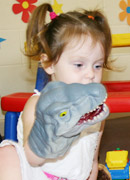Behaviour
Caring for babies
Bottle feeding
Changing a nappy
Cleaning and sterilising bottles
Daily cleaning tasks
Helping new children settle in
Preparing for a nappy change
Sleep patterns – babies
Sleep routines – babies
Toilet training
Caring for children
Allowing time for practice
Dressing/undressing
Mealtimes
Nappy change
Packing away/caring for the environment
Sleep/rest time
Toileting
Common self-help milestones
Tips for sleep and rest time
Self image
Communication
Body language
Limits and guidelines
Ways children communicate
Greeting children and families
Modelling appropriate communication
Questioning
Verbal and non–verbal communication
Acknowledging children's feelings
Listening attentively
Communicating with Aboriginal and Torres Strait Islander parents/carers
Development
Allowing time for practice
Dressing/undressing
Mealtimes
Nappy change
Packing away/caring for the environment
Sleep/rest time
Toileting
Common self-help milestones
Creative development
Language development
Modelling positive relationships
Physical development
Sharing and taking turns
Sleep patterns – babies
Sleep routines – babies
Encourage independent problem solving
Fundamental movement skills
Health, hygiene and safety
Coping with stress
Correct manual handling principles
Daily cleaning tasks
Hand washing
Hand washing poster
Manual handling overview
Toilet training
Safety checklist
Learning experiences and play
Environmentally friendly learning experiences
Learning experiences for different development areas
Creative resource materials
Arranging the environment to facilitate learning and pleasure
Indoors and outdoor areas
Creating a positive physical environment
Legal and ethical issues
Child abuse case studies
How do I recognise when a child or young person is at risk?
Tips on dealing with disclosures
Observation methods
Arranging Experiences (PDF 351Kb)
Recording observations
Rules for making observations
What you can learn from observations
Programming
Children’s interests, strengths, needs and skills
Extending the children’s interest in dinosaurs
Objective observation
Planning an OSHC environment
Behavior management plan
Planning enjoyable experiences
Planning experiences for 0 - 2 years age group
Planning experiences for 2 - 3 years age group
Planning experiences for 3 - 5 years age group
Extending children’s interest in dinosaurs
Below are some ideas for ways children’s interest in dinosaurs could be extended.
Dinosaur poster

A picture should be displayed at the children's eye level. The benefit of using a picture is that children can look at it at their leisure and initiate conversations about it with each other or with me or the other caregivers. This is particularly good for developing the children’s social skills, as the picture encourages conversation with others.
Dinosaur figurines

Figurines can be used in a variety of areas and ways, such as in the block area, during sand play, water play or painting. Figurines are very versatile and allow for pretend play either individually or as part of a group.
Dinosaur puppets and felt pieces

Puppets and felt pieces can be used by the children individually or as a group. They have many uses and the children may enjoy using them for acting out scenes and or creating imaginative stories with them.
Music and movement

By playing various types of classical music that could be interpreted as dinosaur music you could facilitate a group of children moving to the music.
If you looked through some texts or on the Internet you could find lots of other interesting ideas.